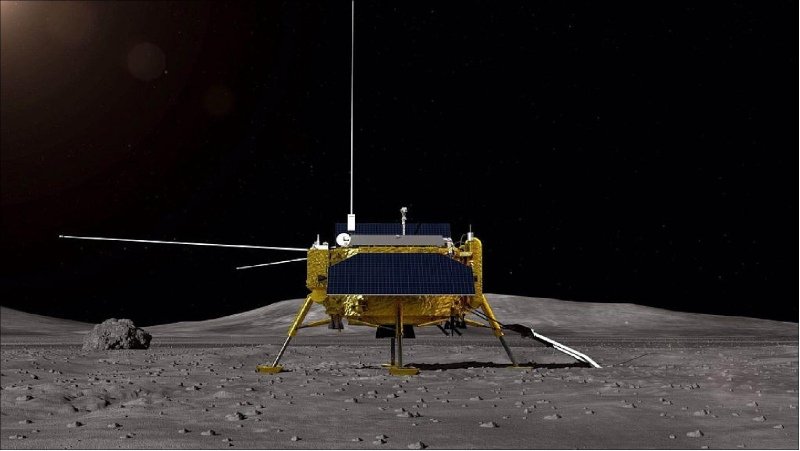In June, China’s Chang’e-6 robotic spacecraft achieved a groundbreaking milestone by collecting the first-ever surface samples from the moon’s far side, a region that constantly faces away from Earth. The materials retrieved are shedding light on the moon’s geological past, revealing the most ancient evidence of lunar volcanism discovered to date. According to researchers, the soil samples from Chang’e-6’s landing site include volcanic rock fragments, specifically basalt, that are approximately 4.2 billion and 2.8 billion years old.
These findings indicate that the far side of the moon experienced volcanic activity for at least 1.4 billion years, suggesting a more prolonged period of geological activity in its early history than previously understood. The moon and Earth are believed to have formed around 4.5 billion years ago. Volcanism on the moon results from the eruption of molten rock, or magma, from beneath its crust onto the surface.
The South Pole-Aitken Basin, where Chang’e-6 landed, is known for having the moon’s thinnest crust, making it an ideal location to uncover volcanic evidence. Using a scoop and drill, the Chang’e-6 probe collected 1,935 grams (about 4.25 pounds) of lunar soil, which was then transported back to Earth, landing in Inner Mongolia.
Analysis of the samples revealed volcanic rock fragments, which researchers dated using radioisotope techniques. Prior missions, including the U.S. Apollo program, Soviet Luna missions, and China’s Chang’e-5, retrieved basalt samples from the near side of the moon, showing volcanism occurred there as early as 4 billion years ago and continued for a minimum of two billion years.
Interestingly, the basalt fragments dated to 4.2 billion years ago differ in composition from those dated to 2.8 billion years ago, indicating they likely originated from distinct magma sources within the moon’s mantle. Furthermore, the samples from Chang’e-6 exhibit unique compositional features compared to previously collected materials from the near side.
Unlike Earth or Venus, which display ongoing volcanic activity, the moon no longer experiences active volcanism. The insights provided by Chang’e-6’s mission continue to deepen our understanding of the moon’s ancient geological processes.
Topics #Apollo #Chang’e-6 #China #Chinese spacecraft #Earth #Moon #Moon History #news #spacecraft #volcano











